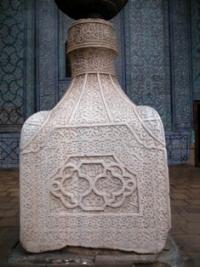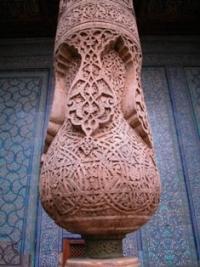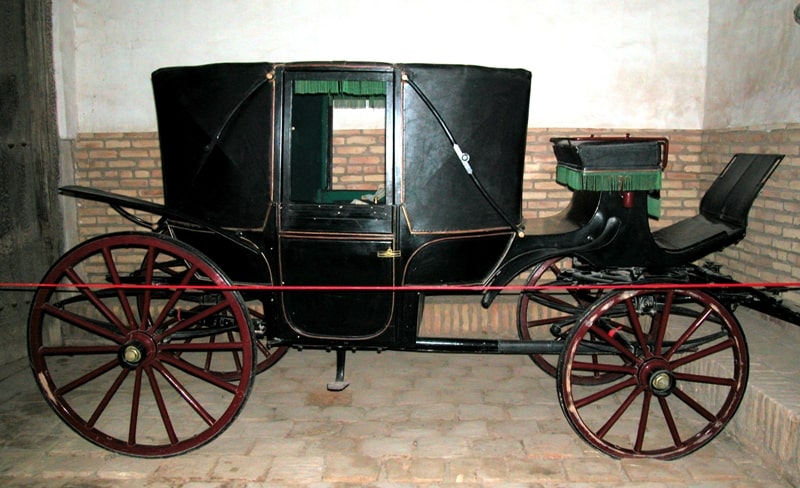You are here
Djuma Mosque in Khiva.


Excursions in religious places of Khiva.
“Is there much benefit from your prayers and incense?
Only he will go to heaven who is not in hell pleased.
What will be ordained to whom in the race -
Before the beginning of creation, God approved
Omar Khayyam.
Tours from Khiva on the monuments of Karakalpakia.
Djuma (Friday) mosque is located in the center of Ichan-kala. Khiva`s Jum`a Mosque (Ja`mi), which means the Cathedral or Friday Mosque, was one of the most remarkable buildings of the city in the Middle Ages and allocated by its distinctive architectural shape and its dimensions.
It was built at the end of the eighteenth century over the ruins of previous construction. This is an original building without portals and cupolas, without galleries and yards. It is 55 x 46 m. One can enter the mosque from four sides.
At the end of the XVIII century mosque was rebuilt with money donated by Abdurahman Khan Mehtar, who at that time was in power. Historian Munis confirms this fact. This mosque is unique in structure, it does not have portals, canopies, galleries and courtyard.
To have access to the mosque on three sides. On the north side of the street called Pahlavan, Kari, with its 33-meter minaret. This monument is reminiscent of the ancient mosques of Khorezm. It occupies quite a large area of 55 х 46 sq. m. in size, and presents a multicolumn construction.
The building is located along the major street that connects eastern and western gates of Ichan-Qala. The Arab traveler al-Maqdisi (al-Muqaddisi) who was in the X century in Khorezm for the first time mentioned of Jum`a mosque of Khiva.
But according to old residents of Khiva the ancient mosque was demolished and in its place with some extension of its area, the present mosque was built with exactly the same layout in 1788.
Exterior view of the mosque is a bit simplified, the height of its walls is 4.5 meters, the height of its minaret makes 42 meters. The gate of the mosque facing the front part of the north and the wind blowing from the north blows out through two rather large skylights arranged in the middle of the roof of the mosque.
Under the apertures in the old days the local varieties of mulberry trees of "Balkhi" sort grew which purified the air inside the mosque at those times, that means thus our fathers and grandfathers achieved a harmonious biosynthesis between nature and a human.
It should be noted that in old times in the yard of many buildings mulberry trees of "Balkhi" variety (or "oq toot" - white mulberry) used to be planted. According to experts mulberry requires very little water, because its roots themselves find water under the ground.
Thereby our ancestors sought the integrity and safety of architectural and residential buildings because a mulberry tree absorbing and collecting moisture around itself thus help maintain balance on distribution soil waters within the area and around the building.
In 1996 - 1997 Juma mosque was restored and during the restoration many worn-out columns were again replaced.

Enlightener:
«Khiva city and legends» the tourist guidebook across Khiva”. http://welcomeuzbekistan.uz
Photos
Allexander Petrov.







